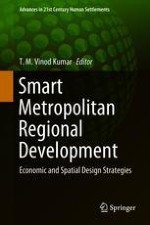2019 | OriginalPaper | Buchkapitel
3. Stuttgart Region—Sustainable Industrialization in Stuttgart Metropolitan Region
verfasst von : Michael Hertwig, Joachim Lentes, Nikolas Zimmermann, Manfred Dangelmaier
Erschienen in: Smart Metropolitan Regional Development
Verlag: Springer Singapore
Aktivieren Sie unsere intelligente Suche, um passende Fachinhalte oder Patente zu finden.
Wählen Sie Textabschnitte aus um mit Künstlicher Intelligenz passenden Patente zu finden. powered by
Markieren Sie Textabschnitte, um KI-gestützt weitere passende Inhalte zu finden. powered by
